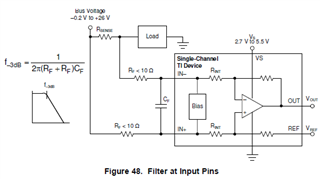Other Parts Discussed in Thread: INA214,
Hi,
My customer is using INA181A1 to replace the INA214 in order to get a fast response with a higher bandwidth. Bur they found out that the output is extremely unstable regarding the interference, sometimes it may turn out to be a square wave on output. The sampling voltage over the shunt is about 10mV, and it is used to sense the current of a switching power supply topology.
So I would like to ask:
1.Are there any special requirements for interference of sampling current of INA181A1, is it suitable for using in switching power supply topology?
2.Are there any solutions for balance the response speed and the stable of system in this case with using INA181A1?
Thanks.
Regards,
Manu Chang


